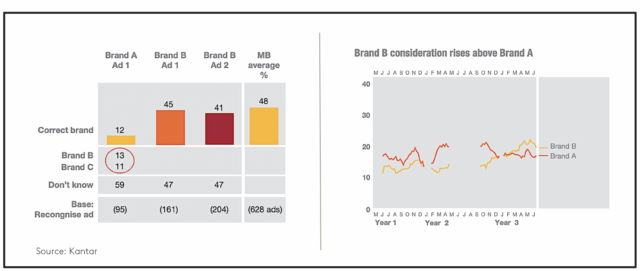By Caroline Parry
Indulgence and, of course, chocolate will always be crucial to Easter, but increasingly this holiday is seen as a celebration of springtime, and people are seeking gifts and experiences that reflect this shift.
This is no doubt that Easter is important to us, with 57% of consumers considering it to be a “proper” holiday, according to a 2018 YouGov survey. This is compared to say, Mother’s Day, which Britons do not see as such a big occasion.
Its importance in our lives is reflected in our social behaviour with Facebook seeing year-on-year growth of 1.6x in our conversations about Easter in 2017. The top five topics discussed around that time are significant others, food, beverages, parties and events, and travel, while the top trending Easter hashtags are #love, #chocolate and #family.
Let’s take a look at some emerging UK Easter trends for 2019 and supporting marketing activation tips advertisers could consider on Facebook platforms in line with these….
Alternative indulgence
Confectionary sales in the UK grew from £375m in 2017 to £395m in 2018. However, while chocolate will always have a place on the shelves at Easter, increasingly consumers are looking for Easter treats to marry with their growing concerns about sustainability and health. Many more of us will be searching for guilt-free ways to spoil ourselves this Easter!
With reducing plastic waste now high up on the agenda of most consumers, forward-thinking brands are thinking outside the traditional egg box to meet these concerns. Innovative chocolate brands, such as Montezuma, vegan brand Goupie and dairy-free brand Booja Booja, are using recyclable packaging, some of which is reusable.
Treating ourselves isn’t limited to gorging on chocolate, and for many people self-care is becoming the alternative way of indulging. Health and beauty e-tailer Lookfantastic struck a chord last Easter with its £65 Beauty Egg, which offered a limited edition collection of seven ‘must-have’ products packaged in a metal egg. No surprise then that this year’s Easter Beauty Egg Bungle had an early waiting list.
Marketing activation tip: Think outside the Easter egg box, by showing more options than just chocolate in your marketing campaigns. How about a carousel ad format where you can showcase a wider brand story and message through different images? For e.g. chocolate, eco packaging, as well as an idea for guilt-free or healthier indulgence / pampering.
The great Easter escape
With family a top trending hashtag over the Easter break, it is a holiday that is increasingly about sharing special moments together. With 72% of consumers feeling no pressure to buy Easter gifts, according to a 2018 Mintel Seasonal Shopping report, we are increasingly swapping presents for social experiences.
Spending on activities far outpaces gifts, according to the same Mintel report, with an average of £113 spent on sharing experiences together compared to £67 on presents. British adults love to hark back to their childhoods when out with friends, with many getting their Easter fun fix by going bowling or trampolining.
Families also love to get out and about, and the many events staged by brands around Easter are ideal opportunities for spending time together. Crafting days and Easter egg hunts, such as the Cadbury partnership with the National Trust, are always big draws, but alternative events such as the Science Museum’s Power Up, which combines gaming with an exhibition, appeal to both parents and kids.
As people prioritise spending time together and creating that sense of belonging, it is little wonder that 10 times more photos are posted and shared during the Easter breaks than before or after.
Marketing activation tip: You can broadcast direct from events so that a wider audience can join the fun and conversation by using the Instagram live feature! Bridge the real world and digital divide seamlessly. By leveraging Facebook marketing partners you can create ads and messaging which are triggered contingent upon weather. We all know British weather can be unreliable, so it’s handy to have bespoke messaging ready to roll out in rainy or sunny circumstances over the Easter weekend.
Creating a meaningful Easter
With Facebook seeing a spike in conversation around food, beverages and parties on Easter Day itself, we know the Easter feast is a vital part of the holiday. British consumers are investing more time and money in making food more meaningful by buying seasonal produce, often sourcing key ingredients locally at stores or markets.
Supporting British producers and local retailers adds real meaning and a sense of story to our Easter food. It’s the reason that over half of shoppers surveyed by digital marketing agency Silverbean, said it is the time of year when buying home-grown products and using local suppliers is essential.
Spring is a time of abundance when it comes to vegetables, and with interest in organic foods and local, independent shopping spiking around this time of year, many turn to social to celebrate their love for fresh local produce. And they really do love it, #rhubarb and #artichoke boast almost a million tagged boasts between them.
Even the major retailers understand shoppers are looking for ways to show their support for local and British suppliers. Morrisons uses a “blue passport” to mark up its lamb products as British and highlight their home-grown credentials. Meanwhile, Hyke Gin is tackling both local and food waste by taking unwanted grapes from the British supply chain and turning it into gin.
Marketing activation tip: If you have great content like Easter ingredients, recipes and pictures to share, consider trying the Instant Experiences templates to quickly create valuable interactions with your customers. Did you know Instant Experiences are loading faster than ever? – now 15 times faster than standard mobile websites – so you can use them to seamlessly connect to an audience. Also, if you have a great local story to tell about your product, you can geo target ads to a certain audience where that messaging would resonate strongly.
Easter, a season of sun
With Easter bringing the first Bank Holidays of the year, it is an excellent opportunity for a holiday or breaks. Almost half of the £1.1bn spent over the Easter weekend in 2018 was spent on Easter getaways, according to travel website Kayak, and 89% of Easter conversation on Facebook in the UK was on mobile.
After the long winter, many are chasing the sunshine and warmth. Back in 2016, the “cool” and adventurous Scandi destinations were booming, last year saw consumers look to sunnier climes. Dubai was the most booked destination for Easter in 2018, with the perennially popular Spanish cities of Malaga and Alicante close behind.
Once again, environmental issues rate high on the agenda for British consumers. Green mini-breaks are becoming the preferred choice for many consumers. The Hilton London Bankside has responded with the creation of the world’s first vegan hotel room, which features suede-like furnishings made from mushroom matter.
Marketing activation tip: Travel insurance brands may want to up-weight their activity on Facebook and Instagram as we know most people leave it last minute to get their insurance sorted! Geo targeting such ads around airports and stations can prove effective. Hotels and retreats can showcase their unique or new look sustainable offerings in a more immersive way by using the power of 360° videos and boosting that content as ads to maximise reach and amplification.
Summary
Easter is still very much about chocolate eggs and bunnies, but consumers increasingly see it as an opportunity for treating themselves, and for spending time with family and friends by sharing great experiences. It is increasingly important however that enjoying these holiday moments is not at the expense of their wider concerns around health and sustainability.











